Aboriginal Health and Welfare
For Aboriginal and Torres Strait Islander peoples, health is a holistic concept which incorporates the physical, spiritual, social, cultural and ecological components, rather than simply being illness free, both for the individual and the community.1
The disparity in healthcare for Aboriginal and Torres Strait Islander peoples has many contributing factors, from colonisation through to assimilation and separation policies, the impacts of which are still evident today. These impacts directly correlate to the social determinants of health, including education, housing and employment.
Aboriginal peoples also experience a higher prevalence of chronic conditions and associated risk factors, compared with non-Aboriginal people, and at younger ages. Yet, despite experiencing a higher disparity in health outcomes compared to non-Aboriginal people, access to health services remains a significant barrier.2
An understanding of the social determinants of Aboriginal health must take into account issues of dispossession and the resulting intergenerational trauma exemplified by the stolen generations, fewer opportunities for education, employment, housing, along with racism.
39%
of the gap between Aboriginal and non-Aboriginal Australians’ health outcomes can be attributed to social determinants.
This rises to 53.2% when combined with behavioural risk factors, such as tobacco use, alcohol use, dietary factors and physical inactivity.
Australian Institute of Health and Welfare 3
53.2%
According to the Australian Institute of Health and Welfare 39% of the gap between Aboriginal and non-Aboriginal Australians’ health outcomes can be attributed to social determinants. This rises to 53.2% when combined with behavioural risk factors, such as tobacco use, alcohol use, dietary factors and physical inactivity.3
Early disadvantage can have lasting effects. The first years of a child’s life provide lifelong foundations for health and wellbeing. Children who have fewer opportunities in early life are more likely to develop problems with health, development, learning and behaviours, and these problems can have a cumulative effect. For Aboriginal communities, poor health equity is reflected in higher infant and child mortality rates and, while rates have declined in recent years, Aboriginal children are 2.1 times as likely as non-Aboriginal children to die before the age of five.4
Consideration of the cultural determinants of health is just as important for Aboriginal and Torres Strait Islander peoples, as a strong connection to culture is strongly correlated with good health, through strengthened identity, resilience and wellbeing. The Aboriginal Health Impact Statement is used by NSW Health organisations to 'incorporate the health needs and interests of Aboriginal people in the development of new and revised health policies, programs and strategies'.5
Learn more about NSW Health’s commitment to improving Aboriginal people’s health outcomes.
Background
Initiatives
References
For Aboriginal and Torres Strait Islander people, health is a holistic concept which incorporates physical, spiritual, social, cultural and ecological components, rather than simply being illness free, both for the individual and the community of which they are a part.1
The poorer health status of Aboriginal and Torres Strait Islander people is well-documented and a result of many factors. Aboriginal and Torres Strait Islander people generally have lower levels of education, income, housing and employment than their non-Indigenous counterparts. They also experience a higher prevalence of most chronic diseases and chronic disease risk factors, compared with non-Aboriginal people, and at younger ages. Yet despite experiencing much worse health than other Australian people, most Aboriginal people have less access to health care services.2
An understanding of the social determinants of Aboriginal health must take into account issues of dispossession and the resulting cultural interruption, intergenerational trauma exemplified by the stolen generations, fewer opportunities for education, employment, housing, along with racism. According to the Australian Institute of Health and Welfare 39% of the gap between Aboriginal and non-Aboriginal Australians’ health outcomes can be attributed to social determinants.3
Early disadvantage can have lasting effects, the first years of a child’s life provide lifelong foundations for health and wellbeing. Children who have a poor start in life are more likely to develop problems with health, development, learning and behaviours, and these problems can have a cumulative effect over their lives. For Aboriginal communities, health inequality is reflected in higher infant and child mortality rates and, while rates have declined in recent years, Aboriginal children are 2.1 times as likely as non-Aboriginal children to die before the age of 5.1
The national Closing the Gap strategy aims to reduce Aboriginal disadvantage in health, education and employment. The strategy has a number of targets, including improving life expectancy, child mortality rates, early childhood enrolments, school attendance and employment outcomes. Central to these targets is the recognition that good health is closely associated with the socioeconomic, environmental and behavioural determinants of health.4
There have been some successes including significant reductions in the overall mortality rate and the proportion of current smokers, and improvements in Year 12 completion rates, overcrowding, homelessness and home ownership. However the gap in health status between Aboriginal and non-Aboriginal Australians is still marked and much more work needs to be done.5
Initiatives
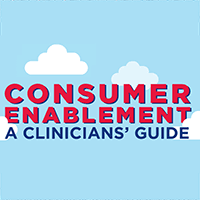
Consumer Enablement Guide
Engaging consumers to understand their health conditions and have the confidence, knowledge and ability to actively manage their health and wellbeing and access the healthcare services they need.
ACI
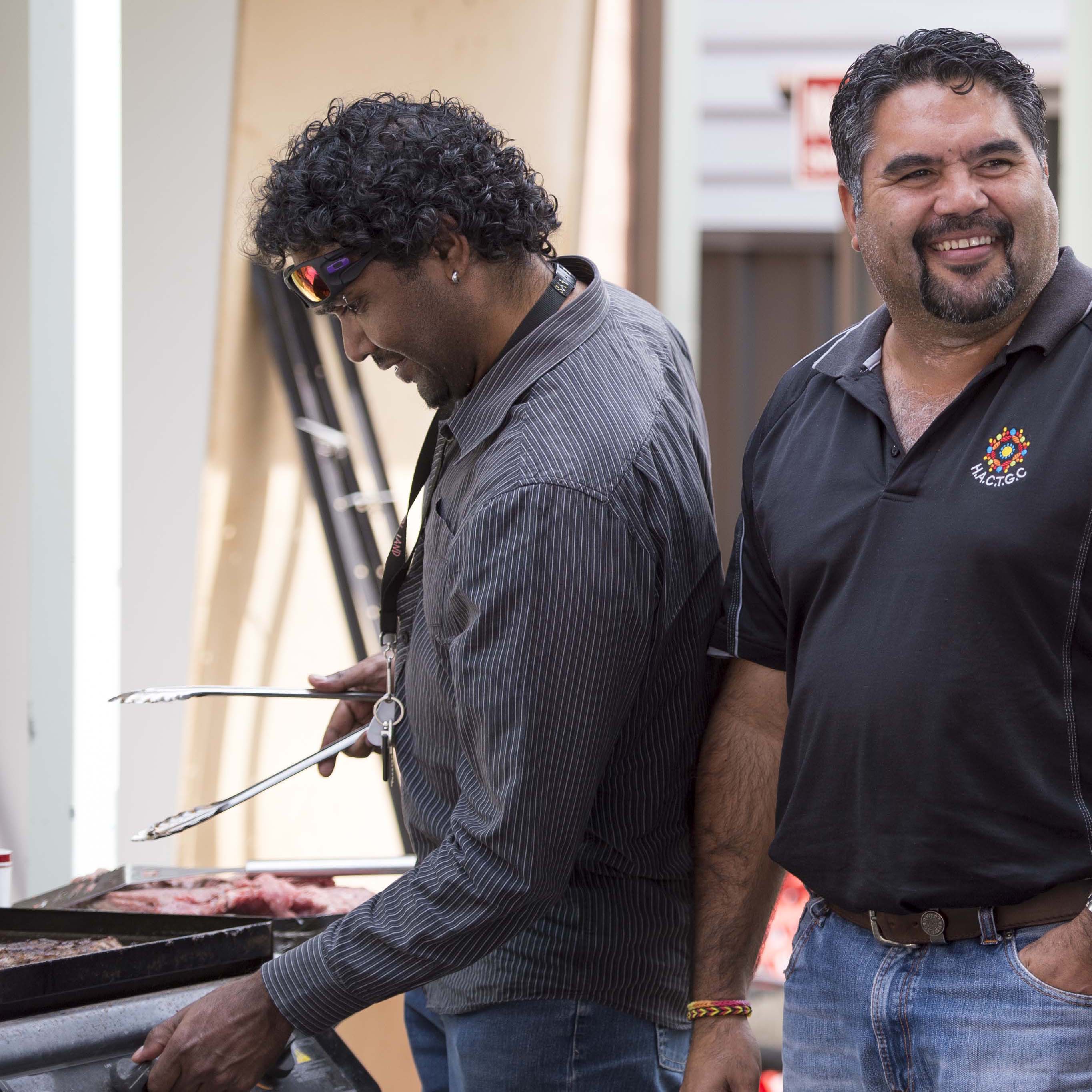
Deadly Choices
In Aboriginal slang, if something is ‘deadly’ it is great. Deadly Choices is empowering Aboriginal and Torres Strait Islander peoples to make healthy choices for themselves and their families – stopping smoking, eating good food and exercising daily. Deadly Choices also encourages people to visit their local Community Controlled Health Service to complete an annual ‘Health Check’ to focus on preventative health - encouraging community to visit the doctor not just when they are unwell but to take steps to prevent and better manage chronic conditions and stay healthy.
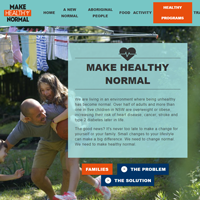
Healthy Eating Active Living
Australians are living in an environment where being unhealthy has become normal. But small lifestyle changes can make a big difference. NSW Health offers free initiatives including digital tools, information and free programs to tackle overweight and obesity to help make healthy normal.
NSW Health

Healthy Homes and Neighbourhoods
A population-based model that focuses on care coordination for vulnerable families with long-term complex health and social needs.
Sydney Local Health District
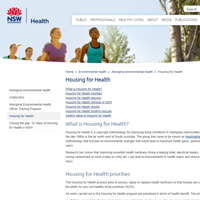
Housing for Health
Housing for Health is a copyright methodology for improving living conditions in Aboriginal communities. The methodology focuses on improving health outcomes through environmental changes particularly for children in early life 0-5 years. Evidence indicates that improving essential health hardware (fixing a leaking toilet, electrical repairs, having sufficient hot water, having somewhere to wash a baby or child, etc.) can improve health status and reduce the risk of disease and injury.
NSW Health
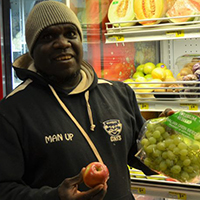
Improving Aboriginal food security and dietary intake
Ngaanyatjarra Pitjantjatjara Yankunytjatjara Women’s Council, Nganampa Health Council, Mai Wiru Regional Stores Aboriginal Corporation and the Australian Prevention Partnership Centre worked together in a concerted intervention to improve availability, affordability, accessibility and promotion of healthier, more nutritious food in what is usually the single store in remote Aboriginal communities in South Australia. The results of the research project show the first improvement in over 40 years in the amount of healthy and food and drinks sold.
Australian Prevention Partnership Centre
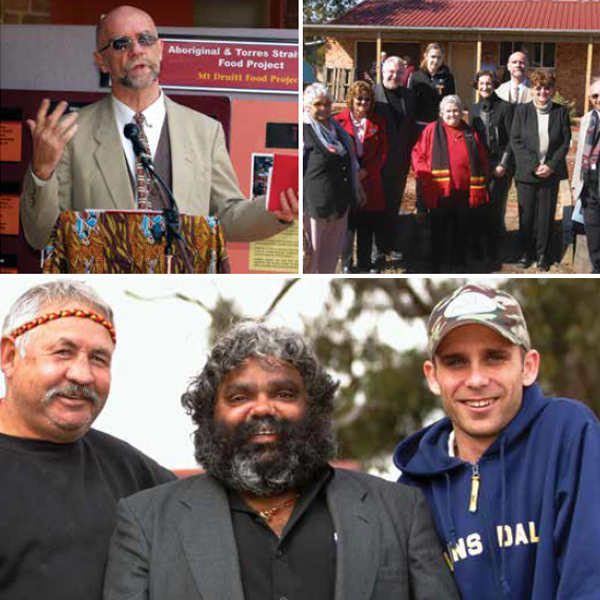
The Shed in Mt Druitt
The Shed provides support to men considered to be at risk of serious stress and suicide, generally due to their disadvantaged situations often brought on by unemployment, separation or loss. Most of these men are of Aboriginal and Torres Strait Islander origin since these are often the men most at risk.
University of Western Sydney, Holy Family Church at Mount Druitt
References
- Australian Institute of Health and Welfare. Australia’s Health 2018. Australia’s health series no. 16. AUS 221. Canberra: AIHW; 2018. p306.
- The National Aboriginal Community Controlled Health Organisation. Aboriginal Health. Canberra: NACCHO; 2018.
- Australian Institute of Health and Welfare. Aboriginal and Torres Strait Islander Health Performance Framework. Canberra: AIHW; 2017.
- Commonwealth of Australia, Dept of Prime Minister and Cabinet. Closing the Gap. Canberra: PM&C; 2018.
- Commonwealth of Australia, Dept of Prime Minister and Cabinet. Closing the Gap Prime Minister’s Report 2018. Canberra: PM&C; 2018. p11.

